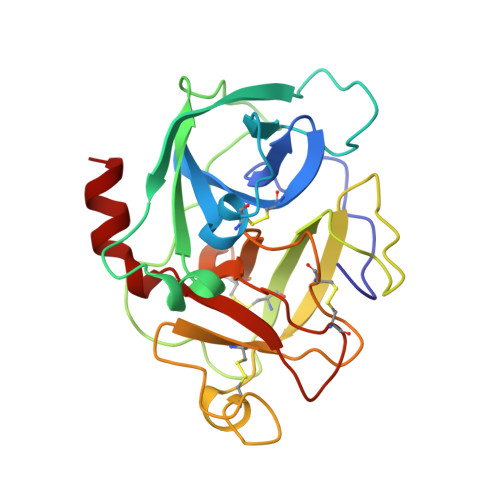Structure of human factor D. A complement system protein at 2.0 A resolution.
Narayana, S.V., Carson, M., el-Kabbani, O., Kilpatrick, J.M., Moore, D., Chen, X., Bugg, C.E., Volanakis, J.E., DeLucas, L.J.(1994) J Mol Biol 235: 695-708
- PubMed: 8289289
- DOI: https://doi.org/10.1006/jmbi.1994.1021
- Primary Citation of Related Structures:
1DSU - PubMed Abstract:
Factor D, an essential enzyme for the activation of the alternative pathway of the complement system, belongs to the serine protease superfamily. The crystal structure of the enzyme was solved by a combination of multiple isomorphous replacement and molecular replacement methods. The present model was refined to an R-factor of 18.8% using 23,681 observed reflections between 7.5 and 2.0 A resolution, with a root-mean-square deviation from standard bond lengths of 0.016 A. The two non-crystallographically related molecules in the triclinic unit cell have distinctive active site conformations. The protein has the general structural fold of a serine protease, but there are several unique amino acid substitutions resulting in significant alterations in the critical loops responsible for catalysis and substrate specificity in serine proteases. Factor D is the first complement serine protease whose three-dimensional structure has been determined.
Organizational Affiliation:
Center for Macromolecular Crystallography, University of Alabama at Birmingham 35294.














